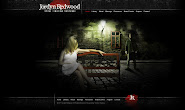Injuries suspicious of abuse:
1. Injury is beyond the child's developmental level: You'll notice this is the first clue I gave concerning the history. But, it also plays into the injury itself and I'm going to talk specifically about infants. Any bruising in an infant to the face, head and neck when they are not yet pulling themselves up to a standing position is concerning for abuse. To create an injury, you have to fall off of or run into something and you need to have some velocity behind it.
2. The injury has a pattern: Consider typical childhood bruises. They are roundish in shape, of varying circumferences and received from a low-velocity type injury... say the child running into a counter with their forehead. Anything that makes an imprint generally requires high-velocity force to imprint the pattern onto the skin. Take the injury to the left. If I loop a belt and tap you with it, there likely won't be any injury at all versus if I take it and swing it at you like a pitcher throwing a baseball, it has the potential to create what you see.
3. The injury in not over a bony prominence: Again, if you have children, think back to their younger days when injuries were common. When they fell, where did they bruise? Head (scalp, forehead, nose, chin), elbows, shins, knees. Most often, kids fall or run into something in a forward motion. Bruising to the buttocks in a diapered child is particularly concerning. Often, they will fall onto their bottoms, but they also have extra padding.
4. There are a lot of bruises: This is not definitive but can be a signal for abusive injury, particularly if the pattern is not a normal bruising pattern as in #3. The graphic comes from: http://www.forensicmed.co.uk/pathology/paediatric-forensic-pathology/.
None of these items is taken in isolation as a single indictment against the caregiver. Let's say you accidentally drop a toy onto your 2 month old's face while cleaning up. It causes a bruise and you want it checked by the pediatrician. The pediatrician is not going to report you. Why? You have a plausible story (dropping something onto the baby's face), it is a low velocity injury (the bruise is probably small and round) and there is only one.
Medical professionals look at the totality of the child's case: the history, the social environment, and the injury is considered before a report to child services is made. Reports are not made lightly.
In future posts, I'll go in to more specifics about child abuse injuries. The above offers some beginning guidelines. In the comments section, give a specific injury that might be concerning for abuse.




































